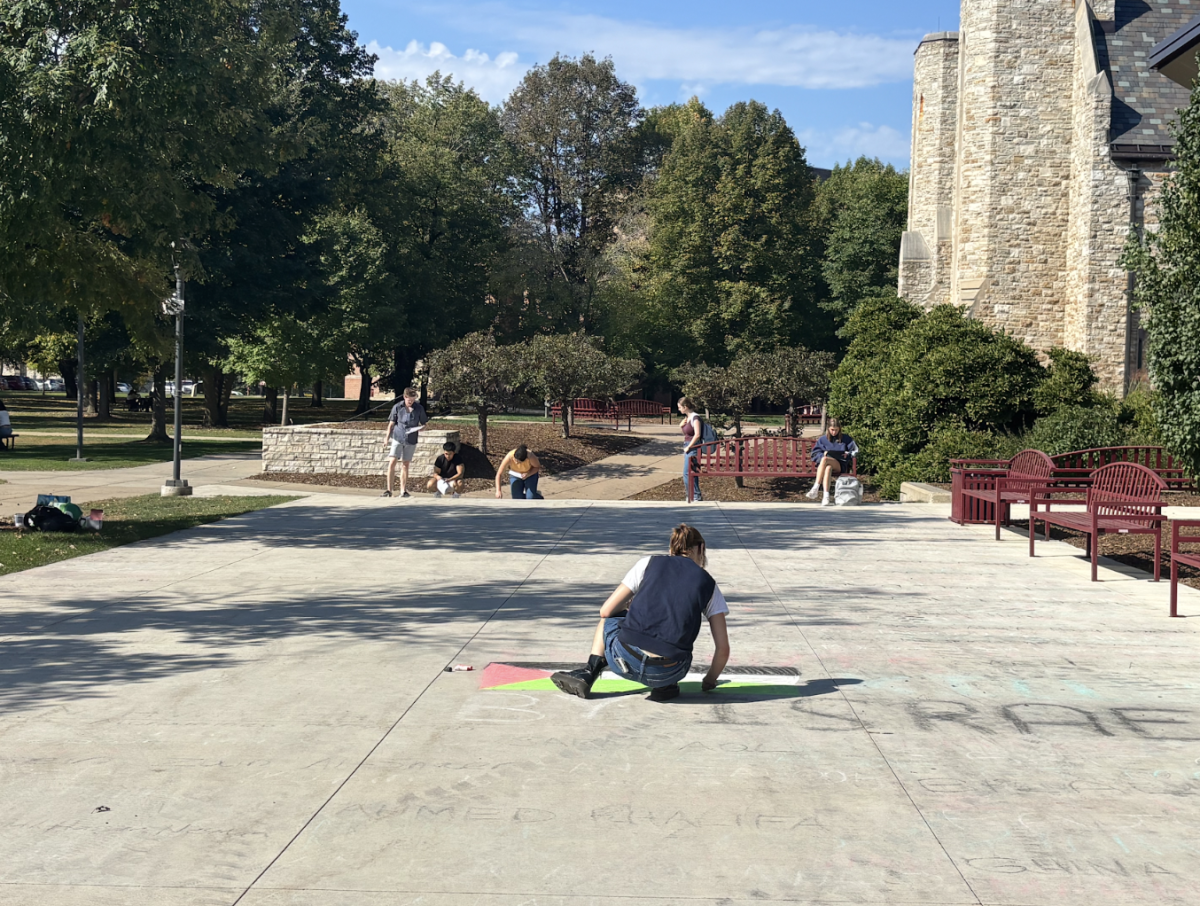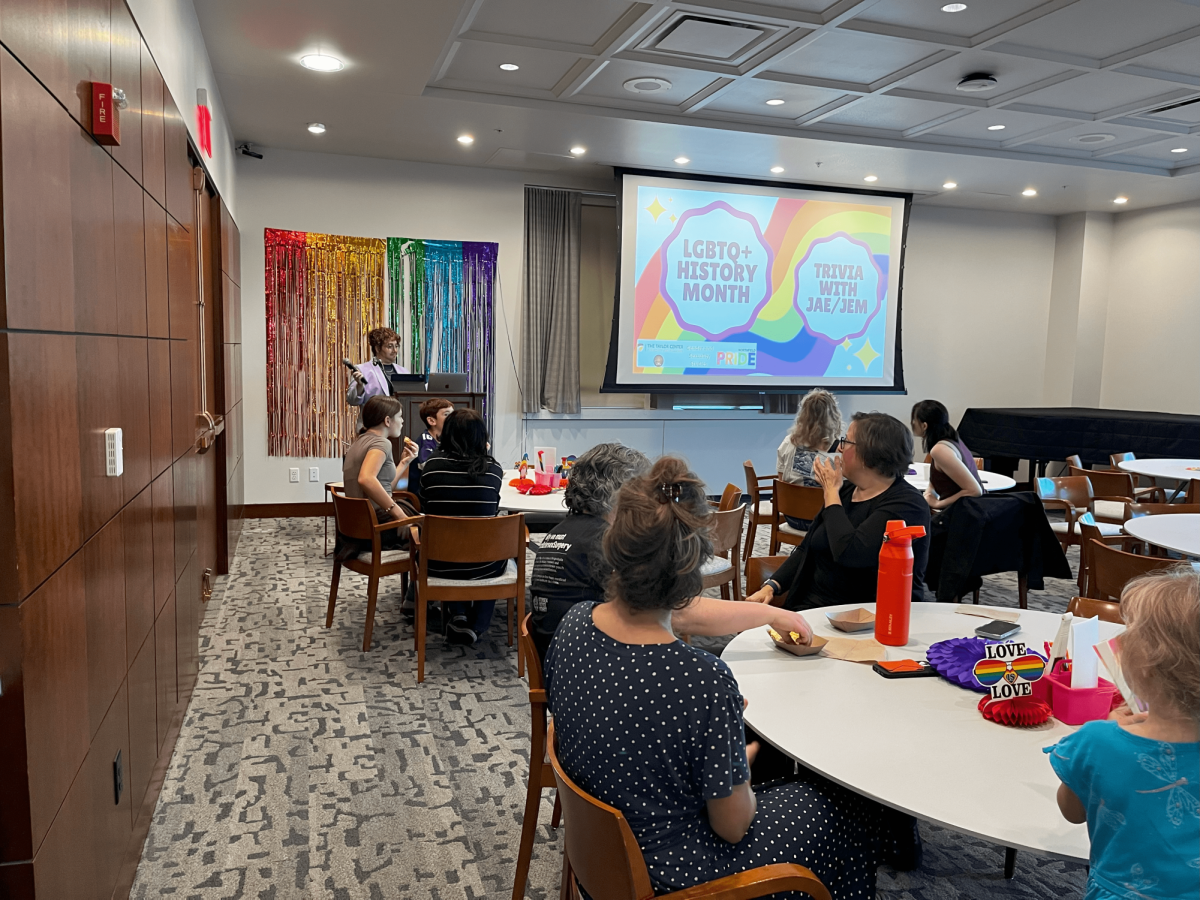“I am leaving St. Olaf College because as a Black woman I don’t have the full support of my white colleagues at the college,” former assistant professor of theater Michelle Gibbs wrote in a letter to faculty on June 13, detailing her account as a Black professor at St. Olaf.
The letter follows her resignation from the school, announced in the spring semester of 2020. In the letter, Gibbs cites specific reasons for leaving, which include “white rage” in the classroom and “Ole culture”, an undefined term that seems to reference the College’s focus on whiteness as the norm.
“This past year, I taught in constant fear of my white students,” Gibbs wrote. “I knew if I angered them, it could mean my job, or fear that they would come for my career.”
During her time at St. Olaf, Gibbs reports that she moved about the College feeling as if her different ways of teaching were viewed as a hindrance, and felt she was being monitored by white faculty, deans and the provost.
Gibbs finished her letter by imploring white faculty to do hard anti-racist work together in order to support faculty of color at the College. She explained that if things did not change, Black faculty would continue to leave the school.
“Once you learn how to be an ally, then you can teach white students how to be allies as well,” Gibbs wrote. “Maybe then there will be space to include all types of teaching pedagogies from diverse bodies that aren’t dependent on understanding Ole culture to be effective.”
The full text of Gibbs’ letter is embedded at the bottom of this article.
Many faculty members responded to her letter voicing their support for Gibbs and sadness that she would be leaving, as well as lamenting her experiences with racism in the classroom and across campus.
Soon after, visiting assistant professor of religion Kelly Figueroa-Ray and assistant professor of music Rehanna Kheshgi spearheaded the creation of the Task Force to Confront Institutional Racism at St. Olaf College. Staff members Alyssa Melby and Theresa Heath were brought in as co-chairs.
The task force hosted a Zoom meeting open to all faculty and staff on June 15, just two days after Gibbs sent her letter. The meeting had over 150 members in attendance.
The leaders of the task force created four headings in their agenda largely based on Gibbs’ email — “Lack of support for faculty of color,” “Guise of Effective Teaching and Learning / Ole Culture Standards and Norms,” “Lack of protection for faculty of color / acknowledgement of white rage,” and “Administration’s insufficient response to 2017 campus protests.”
A copy of the entire meeting agenda is embedded at the bottom of this article.
Immediate next steps for the task force include solidifying faculty and staff members’ involvement, seeking to include students in their work and deciding on their first action item. The task force plans to establish subcommittees composed of staff, faculty and students to focus on specific initiatives and will vote on their first action item late next week at their second meeting.
The temporary “Critical Analysis of Ole Culture” subcommittee will, “focus specifically on interrogating Ole Culture and devising ways to uncover and expose its underlying norms that center whiteness and how it impacts how various people experience life on campus,” the task force wrote in an email to the Messenger.
At the June 15 meeting, many faculty and staff expressed that “Ole Culture,” as detailed in Gibbs’ letter, is a concept that must be explored immediately.
The full video of the meeting is linked at the bottom of this article.
The same day this group met, Lisa Moore, former associate professor of social work and family studies, offered her support for Gibbs in an email to faculty. Moore also left the College following the 2019/20 school year and echoed similar sentiments to Gibbs regarding her experience as a Black professor.
In her message, Moore unpacked the roles Black women are forced to play at St. Olaf. She referenced Patricia Hill Collins’ explanation of Black women being viewed as “Mammies, Matriarchs, or Welfare Queens,” concepts that help give context to the underlying racist expectations placed on Black women faculty specifically.
The full text of Moore’s letter is embedded at the bottom of this article.
Moore also explained the implications of “Ole culture” and elaborated that in order to see change in meaningful ways, that very culture must be disrupted entirely.
“[Addressing anti-blackness and racism] means going beyond thinking about how Black and Brown faculty can survive in the system and focus on changing the system itself,” Moore wrote. “Systems change almost always means letting go of ways of functioning that are comfortable for the majority and those who hold power. Making those kinds of changes shakes the roots of institutions.”
Similar to Gibbs, Moore warned the College that the hiring and retention of Black faculty would continue to be difficult, explaining that “[Gibbs’] experience will absolutely make it harder to recruit Black women here for positions.”
Provost Marci Sortor confirmed that the difficulty in hiring Black faculty is something the College has been dealing with for a long time. She elaborated about the school’s institutional goal to have “at least 30% of tenure track appointments be diverse” and explained that search committees are required to go through anti-bias training when hiring new faculty.
Looking toward the future, Sortor acknowledged some of the actions both the Faculty Governance Committee and the Council for Equity and Inclusion plan to take to address diversity and inclusion amongst faculty.
“At present, the campus, state, and national discussion is so dynamic that we will take the time needed to hear from these voices before finalizing our recommendations,” Sortor wrote. “We will be calling on the college to focus in 2020/21 specifically on race and the Black experience as part of our work to achieve the Vision [for Equity and Inclusion].”
While Sortor outlined current actions and next steps for the College, she acknowledged that work is ongoing.
“We aren’t perfect in it, but the vast majority of those with whom I work feel responsibility for how our campus culture affects colleagues and students of color,” Sortor wrote. “That said, we still have plenty of work to do to educate ourselves and do better as mentors and colleagues.”
The experiences of Gibbs and Moore are not isolated cases. Other faculty of color expressed similar feelings about racism and intolerance on campus through a statement of solidarity and intent shared by the Marginalized and Diverse Faculty of Color Anti-Racism Coalition (Mad Facs).
Mad Facs is a new group of current faculty, who remain anonymous because they “fear retaliation.” They published a statement supporting and echoing Gibbs’ and Moore’s thoughts. That full statement is embedded at the bottom of this article. The group intends to publish more in the near future.
“We grieve the immeasurable ways that their creativity, intellectual labor, and pedagogies could have transformed the college into an institution where Black women professors and all Black and Brown faculty thrive,” the group wrote.
Mad Facs addressed the same idea of “Ole Culture” and provided a more exact explanation of the idea while citing its dismantling as their driving force.
“Ole Culture” is a euphemism for a racial legacy of which St. Olaf is a dedicated monument,” the group wrote. “Standing against this legacy is the foundation of our solidarity.”
These sentiments shared by Black faculty are not singular and are not new, and, as Moore explained in her letter, they reflect a legacy that is anti-Black and permeate all aspects of campus.
“Anti-blackness is insidious.” Moore wrote. “St. Olaf embodies anti-blackness in a way that few places I have ever worked have, it’s why I had to walk around with headphones on whenever I left my office, the whiteness of campus felt oppressive in a way that no other place I have worked has.”
Michelle Gibbs — Why I am leaving St. Olaf College
Mad Facs — A Statement of Solidarity and Intent
Faculty and Staff Discussion Meeting Agenda
The Taskforce to Confront Institutional Racism — June 15 Zoom
[email protected]
[email protected]












